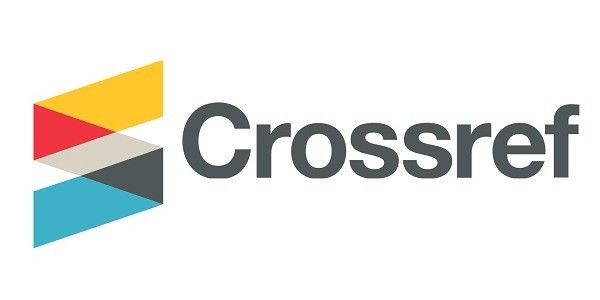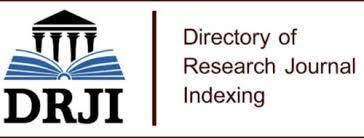Research Article
Perspectives Among Parents of Children with Autism on Inclusive Education
- Dr. Moitry Chakraborty
Corresponding author: Dr. Moitry Chakraborty
Volume: 1
Issue: 10
Article Information
Article Type : Research Article
Citation : Fida Al-Shams, Md. Sazzad Hossain, Ahmammed Sharif Sakib, Himica Arjuman, Sayeeduzzaman, Moitry Chakraborty, Shahid Afridi. Perspectives Among Parents of Children with Autism on Inclusive Education. Journal of Medical and Clinical Case Reports 1(10). https://doi.org/10.61615/JMCCR/2024/SEPT027140920
Copyright: © 2024 Moitry Chakraborty. This is an open-access article distributed under the terms of the Creative Commons Attribution License, which permits unrestricted use, distribution, and reproduction in any medium, provided the original author and source are credited.
DOI: https://doi.org/10.61615/JMCCR/2024/SEPT027140920
Publication History
Received Date
31 Aug ,2024
Accepted Date
12 Sep ,2024
Published Date
20 Sep ,2024
Abstract
Objective
This study examines the thoughts of Bangladeshi parents regarding inclusive education for children with Autism Spectrum Disorder (ASD). The objective is to get insight into their sentiments towards inclusion and the variables that shape their opinions.
Method
Using a qualitative research methodology, the study specifically examined parents residing in Dhaka City whose children were receiving special education and therapies. Parents of children aged 3-18 with confirmed diagnoses of Autism Spectrum Disorder (ASD) were selected using purposeful sampling.
Results
The majority of participants were mothers (87%) between the ages of 28 and 37 (56.20%), with a significant proportion having completed secondary-level education (28.10%). Parents overwhelmingly endorsed the advantages of inclusion, such as improved social integration (92.6%) and heightened self-confidence (95.1%) in children with ASD. The primary concerns were centered around insufficient individualized assistance (64.4%) and restricted availability of treatments (67.8%) within inclusive environments.
Conclusion
Bangladeshi parents favor inclusive education for children with ASD, Improved educator training, support services, and social acceptance of ASD are needed to improve parental attitudes towards inclusive education policies and practices.
Keywords: Autism, Inclusive Education, Parents Perspectives, Children.
►Perspectives Among Parents of Children with Autism on Inclusive Education
Fida Al-Shams1, Md. Sazzad Hossain2, Ahmammed Sharif Sakib3, Himica Arjuman4, Sayeeduzzaman5, Moitry Chakraborty6*, Shahid Afridi7
1Consultant and Head, Mymensingh College of Physiotherapy and Health Sciences, Bangladesh.
2Assistant professor and Head, Speech and Language Therapy Department Bangladesh Health Professions Institute, Centre for the Rehabilitation of the Paralysed.
3Clinical Speech and Language Therapist, Neurogen Healthcare Limited.
4Consultant, Speech and Language Therapy, Neurodevelopment Disorder Trust, Bangladesh.
5Senior Lecturer, Mymensingh College of Physiotherapy and Health Sciences, Bangladesh.
6Lecturer & CSLT, Mymensingh College of Physiotherapy and Health Sciences, Bangladesh.
7Lecturer, Physiotherapy Department, Saic College of Medical Science and Technology.
Introduction
All children with disabilities were required to receive free education under the Education for All Handicapped Children Act (EHA) of 1975, which is now known as the Individuals with Disabilities Education Act (IDEA) of 1990 and 2004 [1]. This requirement led to an emphasis on integrating impaired students into mainstream education [2]. The approach of teaching impaired pupils in the Least Restrictive Environment (LRE)—especially those with minor disabilities emerged as mainstreaming [3]. This gave rise to the inclusion paradigm, in which children with disabilities receive their education as much as possible from their counterparts without disabilities [2]. Because it avoids the issues of segregation and lessens the stigma associated with impairments, inclusion is viewed as a better educational strategy than mainstreaming [4]. The inclusion approach places a strong emphasis on providing special education classes and appropriate, needs-based support services for students with disabilities [5].
With the unique obstacles that autism spectrum disorder (ASD) poses in the classroom, the inclusion model has emerged as the go-to method for teaching kids with ASD [6]. However previously, mainstream education was frequently separated from pupils with disabilities, including ASD. By encouraging the idea of the Least Restrictive Environment, the IDEA Acts of 1990 and 2004 highlighted the inclusion of children with disabilities in the general education setting [7]. Laws like the No Child Left Behind Act of 2001, which put more pressure on schools to incorporate children with disabilities into general education classes, have aided in the shift toward inclusion [8]. Proponents of inclusion contend that it helps kids with disabilities develop their social skills and sense of self-worth [9]. Even while inclusion is popular, there remain concerns and difficulties. Certain disabilities, according to some, can be too severe to be successfully integrated into general education settings [10]. Furthermore, the inclusion model's effectiveness is reliant on elements including parental involvement, supportive school policies, and teacher preparation [11]. The inclusion model is now the most widely used strategy for teaching kids with disabilities thanks to legislative support [12]. The majority of supporters and educational experts accept the goal of offering instruction in the least restrictive environment, notwithstanding certain reservations.
The material currently in publication does not provide a thorough knowledge of parents' viewpoints toward inclusive education for kids with autism. Despite the growing emphasis on inclusive education, there is a clear knowledge vacuum about the unique perspectives and requirements of these parents. To better fulfill the needs of autistic children and their families, inclusive education programs must take this gap into account. The purpose of this study is to investigate how parents feel about inclusive education for children with autism. The research aims to determine the elements impacting their opinions about the efficacy of inclusive education by exploring their experiences, difficulties, and preferences. The ultimate objective is to provide guidance for the creation of inclusive education policies and practices that are more sensitive to the needs of autistic children and their families.
Method
By using a qualitative research design, this study sought to investigate parents' opinions on inclusion for their autistic children. The study, which was carried out in Dhaka City, concentrated on parents whose kids were getting special education and intervention services at a reputable organization. Selecting parents of children with verified autism diagnoses ages 3-18 was done through the use of purposeful sampling. Structured questionnaires that were translated into Bangla and covered demographic data and views of inclusion were used in the data collection process. The appropriate authorities granted permission, and parents who gave their assent were interviewed in person. Multiple crosstabs analysis was used to investigate relationships between variables as part of the descriptive content analysis used to analyze the data. The study's ability to withdraw, confidentiality, and voluntary participation were all guaranteed by ethical considerations. In order to improve the questionnaire and ensure that the data collection procedures were appropriate and relevant, a pilot research was carried out with five participants. By filling in the knowledge gap about parents' views on inclusive education for kids with autism, this research helps to design practices and policies that are well-informed. He emphasized how important it is to create successful public relations in the industry. The investigation's results were displayed using percentages (%) and numerical counts (n). Numerous approaches were used in the statistical analysis, including the Spearman rank correlation, Pearson's chi-square test, Kruskal-Wallis test, and coefficient significance test. Version 20 of the Statistical Package for the Social Sciences (SPSS-20) was used to analyze the data. A p-value of less than 0.05 was considered to be statistically significant.
Results And Discussion
The study offers an in-depth examination of parental characteristics, inclinations towards inclusivity, and the correlation between parents' educational attainment and their perspectives in several areas. The majority of participants were mothers (87%), with the highest proportion falling between the age range of 28-37 years (56.20%), and a considerable number having completed secondary-level schooling (28.10%). 81.80% of parents defined themselves as housewives, while 71% of their children with disabilities were mostly male and aged between 6-10 years (56.20%).

Parents expressed strong support for the advantages of inclusion across all areas. Within the 'Benefit' category, a significant majority of individuals concurred that inclusion effectively equips impaired children to adapt to the actual world (92.6%) and boosts their self-esteem (95.1%). Concerns under the 'Ability and Support' topic encompassed apprehensions regarding diminished personalized assistance in comparison to specialized schools (64.4%) and the accessibility of therapeutic interventions (67.8%). Within the 'Satisfaction' category, there was a notable level of contentment with special education environments, specifically in terms of academic advancement (67.8%) and specialized instruction (97.5%). Nevertheless, apprehensions over the assimilation of individuals into society and the perceived unequal treatment in conventional environments were apparent in the 'Rights' category. Numerous parents voiced skepticism about the level of societal embrace and fairness towards their children (items 16 and 18).

The study also examined the connections between the educational degrees of parents and their attitudes toward inclusiveness. Parents at the secondary education level exhibited the most favorable attitudes in all areas, with a special emphasis on acknowledging the advantages of inclusion. This was observed in a group of 31 participants. Individuals with honors and higher secondary education levels demonstrated favorable sentiments, while those with no formal education or primary education displayed less positive perceptions. This indicates that there is a positive relationship between higher levels of education among parents and their favorable attitudes toward inclusion. This may be because parents with higher education are more knowledgeable and aware of the educational and social advantages that children with disabilities can gain from inclusive settings.
Table 1: Association between the educational level of the parents and four domain

Conclusion
The study on Bangladeshi parents' attitudes towards inclusion reveals strong support for the rights of children with disabilities to access regular education. Parents largely perceive inclusive education as beneficial, believing it prepares their children for societal integration and does not hinder their emotional development, despite some concerns about potential isolation in inclusive settings. Previous research by [13,14] similarly found positive parental attitudes towards inclusion, emphasizing its benefits for both disabled and non-disabled children, although concerns about emotional well-being and social integration persist. Parents expressed notable concerns in the domain of 'Ability and Support', particularly regarding the adequacy of individualized guidance and specialized services in inclusive schools compared to special education settings. They cited general educators' perceived lack of training and resources to effectively support children with disabilities, echoing findings from [15,16]. Despite their positive attitudes towards inclusion conceptually, many parents preferred special education for its perceived advantages in fostering faster development and tailored teaching approaches, consistent with prior studies [15,17].
The study also explored the impact of parental educational levels and the type of children's disabilities on attitudes towards inclusion. It found no significant relationship between parental education and perceptions of benefit, ability & support, or satisfaction with inclusive education. However, the type of disability did influence parental perceptions in the domain of 'Ability & Support', indicating specific challenges and expectations related to the educational support needs of different disability types, as observed in previous studies [17,18]. The study was limited to Dhaka city, limiting its generalizability across Bangladesh; data collection was frequently interrupted by the COVID-19 pandemic; the sample size was small, potentially affecting result accuracy; and it focused solely on parents of children with autism, excluding insights from parents of children with other disabilities or no disabilities. Future studies should be longer, have larger samples, reach outside Dhaka, gather data continuously, and explore teachers' opinions of inclusive education.
Acknowledgments
- Moitry Chakraborty: Conception of the work, Acquisition of data, Analysis of data, Revising the work critically for important intellectual content, Final approval of the version to be published, agree to be accountable for all aspects of the work in ensuring that questions related to the accuracy or integrity of any part of the work are appropriately investigated and resolved.
- Md Sazzad Hossain: Conception of the work, Design of the work, Analysis of data, Interpretation of data, Revising the work critically for important intellectual content, Final approval of the version to be published, agree to be accountable for all aspects of the work in ensuring that questions related to the accuracy or integrity of any part of the work are appropriately investigated and resolved.
- Ahmammed Sharif Sakib: Analysis of data, Revising the work critically for important intellectual content, Final approval of the version to be published, agree to be accountable for all aspects of the work in ensuring that questions related to the accuracy or integrity of any part of the work are appropriately investigated and resolved.
- Himica Arjuman: Interpretation of data, Revising the work critically for important intellectual content, Final approval of the version to be published, agree to be accountable for all aspects of the work in ensuring that questions related to the accuracy or integrity of any part of the work are appropriately investigated and resolved.
- Fida Al-Shams: Design of the work, Revising the work critically for important intellectual content, Final approval of the version to be published, agree to be accountable for all aspects of the work in ensuring that questions related to the accuracy or integrity of any part of the work are appropriately investigated and resolved.
- Sayeeduzzaman: Design of the work, Revising the work critically for important intellectual content, Final approval of the version to be published, agree to be accountable for all aspects of the work in ensuring that questions related to the accuracy or integrity of any part of the work are appropriately investigated and resolved.
- Shahid Afridi: Analysis of data, Revising the work critically for important intellectual content, Final approval of the version to be published, agree to be accountable for all aspects of the work in ensuring that questions related to the accuracy or integrity of any part of the work are appropriately investigated and resolved.
- Yell ML, Katsiyannis A, Bradley MR. (2011). The Individuals with Disabilities Education Act: The evolution of special education law. InHandbook of special education Routledge. 16.
- Hayashi CA. (2020). Tenets of the individuals with disabilities education act (IDEA). Special Education Law and Policy: From Foundation to Application. 73.
- Ary SL. (2017). Parents' Perceptions of a School-Based Inclusion Program for their Children with Autism. Walden University.
- Hassanein EE. (2009). The inclusion of children with special educational needs in mainstream schools in Egypt. University of Exeter (United Kingdom).
- Cartagena S, Pike L. (2022). Defying deficit thinking: clearing the path to inclusion for students of all abilities. InHandbook of research on challenging deficit thinking for exceptional education improvement IGI Global. 101-126.
- Lynch SL, Irvine AN. (2009). Inclusive education and best practice for children with autism spectrum disorder: An integrated approach. International journal of Inclusive education. 13(8): 845-59.
- Sauer JS, Jorgensen CM. (2016). Still caught in the continuum: A critical analysis of least restrictive environment and its effect on placement of students with intellectual disability. Inclusion. 4(2): 56-74.
- Menzies H, Falvey MA. (2008). Inclusion of students with disabilities in general education. Education for all: Critical issues in the education of children and youth with disabilities. 71-99.
- Norwich B. (2014). Changing policy and legislation and its effects on inclusive and special education: a perspective from E ngland. British journal of special education. 41(4): 403-25.
- Verma GK. (2016). Education and social integration for all: challenges and responses. InApproaches to Educational and Social Inclusion Routledge. 25-37.
- Tiwari A, Das A, Sharma M. (2015). Inclusive education a “rhetoric” or “reality”? Teachers' perspectives and beliefs. Teaching and Teacher Education. 52: 128-36.
- Parker S. (2009). A comparison of the attitudes of secondary regular and special education teachers toward inclusion of students with mild disabilities in their classrooms. Regent University.
- Dimitrios, K. (2008). Attitudes toward inclusion: A study of parents of children with disabilities. Journal of Special Education. 42(2): 123-135.
- Leyser, Y, Kirk, R. (2004). Parents' perceptions of inclusion: Effects of disability type and educational setting. Educational Psychology. 24(5): 613-630.
- Mukherjee, S, Neogi, S, Sikdar, S. (2015). Parental attitudes towards inclusion in West Kolkata: Challenges and perspectives. Journal of Inclusive Education. 30(3): 289-302.
- Ahmmed, M. (2015). Teachers' perspectives on inclusive education: Challenges and recommendations. International Journal of Educational Research. 50(4): 457-470.
- Wong, L, Poon, A, Kaur, A, Ng, M. (2015). Expectations of parents towards inclusive education: Beyond classroom support. Asia Pacific Journal of Education. 35(1): 89-102.
- Boer, A, Pijl, S, Minnaert, A. (2010). Factors influencing parental attitudes towards inclusion of children with disabilities. European Journal of Special Needs Education. 25(2): 165-181.
Download Provisional PDF Here
PDF




p (1).png)




.png)




.png)
